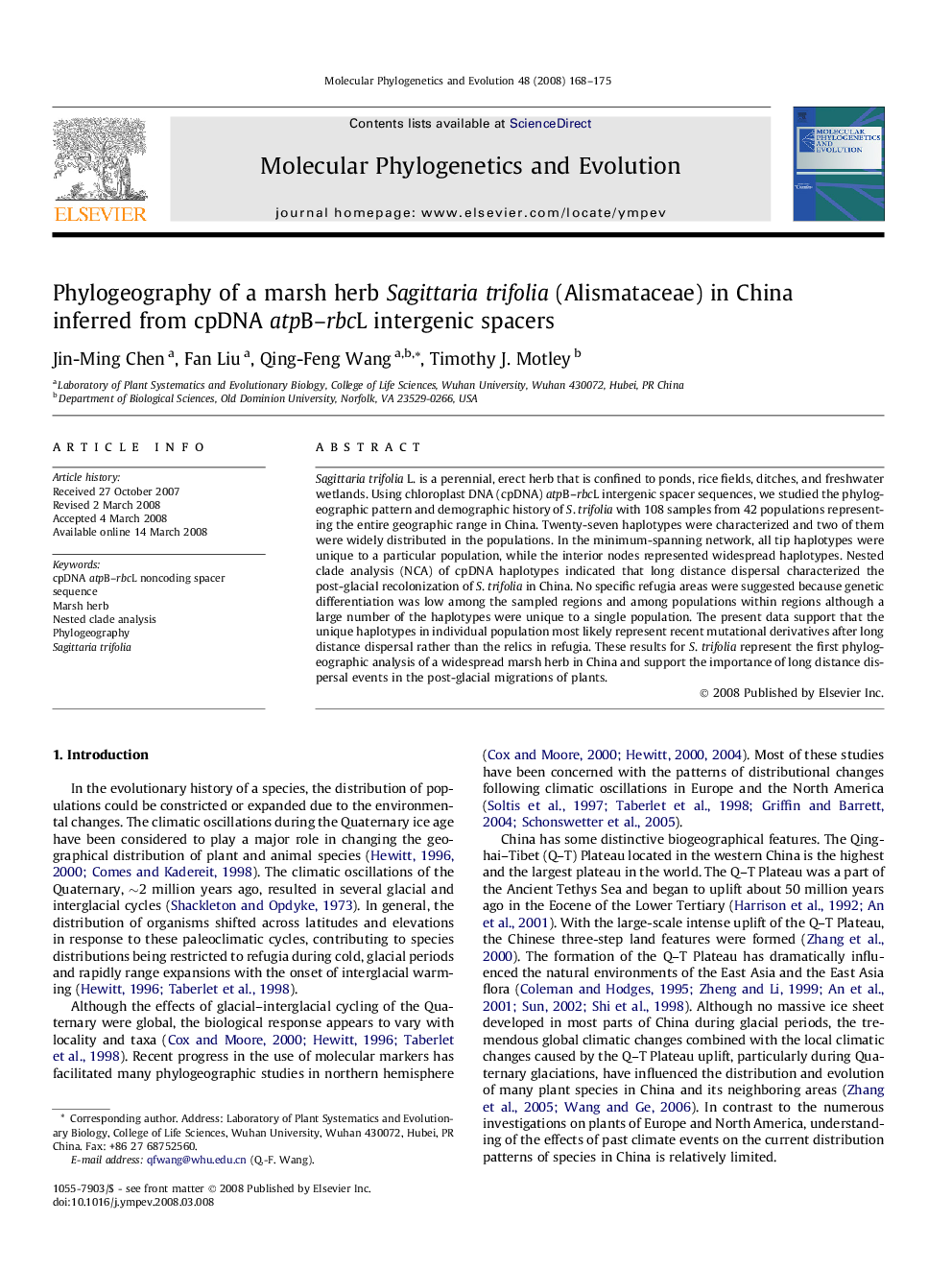| Article ID | Journal | Published Year | Pages | File Type |
|---|---|---|---|---|
| 2835200 | Molecular Phylogenetics and Evolution | 2008 | 8 Pages |
Sagittaria trifolia L. is a perennial, erect herb that is confined to ponds, rice fields, ditches, and freshwater wetlands. Using chloroplast DNA (cpDNA) atpB–rbcL intergenic spacer sequences, we studied the phylogeographic pattern and demographic history of S. trifolia with 108 samples from 42 populations representing the entire geographic range in China. Twenty-seven haplotypes were characterized and two of them were widely distributed in the populations. In the minimum-spanning network, all tip haplotypes were unique to a particular population, while the interior nodes represented widespread haplotypes. Nested clade analysis (NCA) of cpDNA haplotypes indicated that long distance dispersal characterized the post-glacial recolonization of S. trifolia in China. No specific refugia areas were suggested because genetic differentiation was low among the sampled regions and among populations within regions although a large number of the haplotypes were unique to a single population. The present data support that the unique haplotypes in individual population most likely represent recent mutational derivatives after long distance dispersal rather than the relics in refugia. These results for S. trifolia represent the first phylogeographic analysis of a widespread marsh herb in China and support the importance of long distance dispersal events in the post-glacial migrations of plants.
